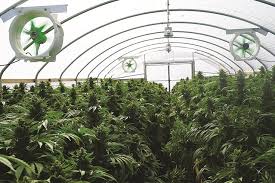When creating an HVAC (Heating, Ventilation and Air Conditioning) system to be used in a grow room hvac design many crucial factors need to be considered to ensure an optimal atmosphere for growth. An HVAC system that is well-designed is vital to ensure ideal temperature, humidity and air quality which directly impacts plant health and yield.
1. Temperature Control:
Maintaining the correct temperature is vital for plant growth. The majority of plants thrive in a temperature range between 65degF to 80degF (18degC to 27degC). The HVAC system should be able of cooling and heating in order to adjust to the needs of the plants. Heating and air conditioners must be chosen based on the size of the space and the power of grow lighting and other equipment.
2. Humidity Management:
Controlling humidity is another crucial component in HVAC design. A high humidity level can cause mold and mildew, while low humidity can lead to plant stress. Humidifiers and dehumidifiers should be incorporated in the HVAC system to maintain the optimal humidity levels, generally between 40 and 60 percent relative humidity.
3. Air Circulation:
A good air circulation system helps spread temperature and humidity evenly throughout the growing space, preventing hotspots and ensuring that all plants receive adequate airflow. HVAC systems should have fans and ductwork to promote circulation of air. Oscillating fans and inline fans can assist in moving air around and make sure that all the areas of the space are properly ventilated.
4. Air Quality:
A healthy air quality is vital for plant health. The grow room hvac should have filters that can get rid of pollen, dust, and other particles that may impact the growth of plants. Carbon filters that activate are beneficial in removing odors and improving the quality of air. Furthermore, proper ventilation can help get rid of carbon dioxide as well as replenish the air with clean, which is vital to photosynthesis.
5. System Efficiency:
Efficiency in energy is a crucial aspect, particularly in larger grow rooms where HVAC systems could account for large proportions of operational costs. Investing in high-efficiency equipment and appropriately insulating the room can help reduce energy consumption and costs.
6. Automation and Control:
Modern HVAC systems can be equipped with automated controls that permit precise control of temperature, humidity, and CO2 levels. Automated systems can be programmed to adjust settings based on daylight hours, time of day cycles, and environmental changes that provide a stable and growing environment with minimal involvement from a manual.
Conclusion:
A properly-designed HVAC system is vital to providing the best growing conditions in the grow room. When you carefully consider the control of humidity, temperature in addition to air circulation, air quality, system efficiency, and automation Growers can ensure that their plants are provided with the ideal conditions for good growth and high yields.
